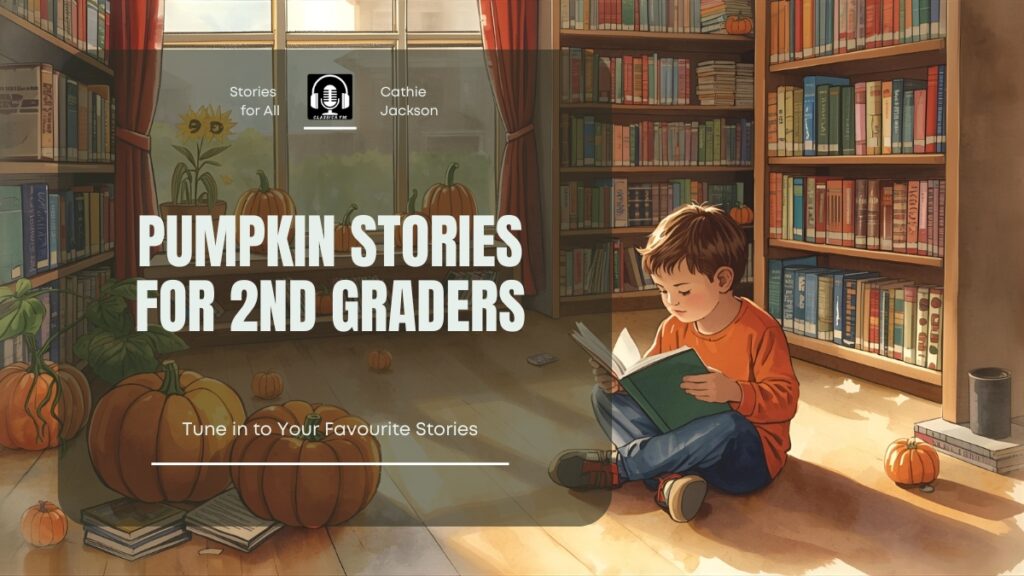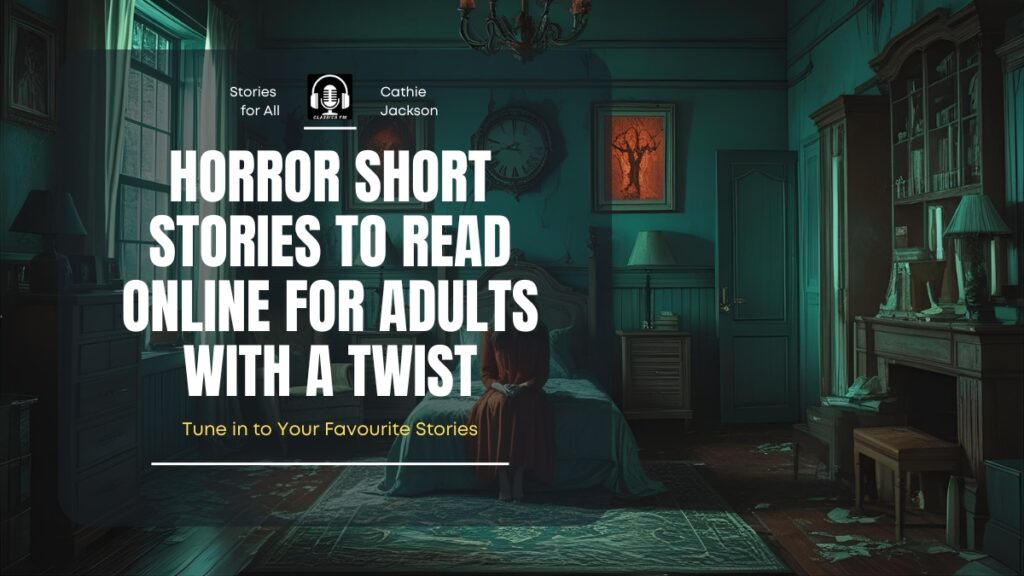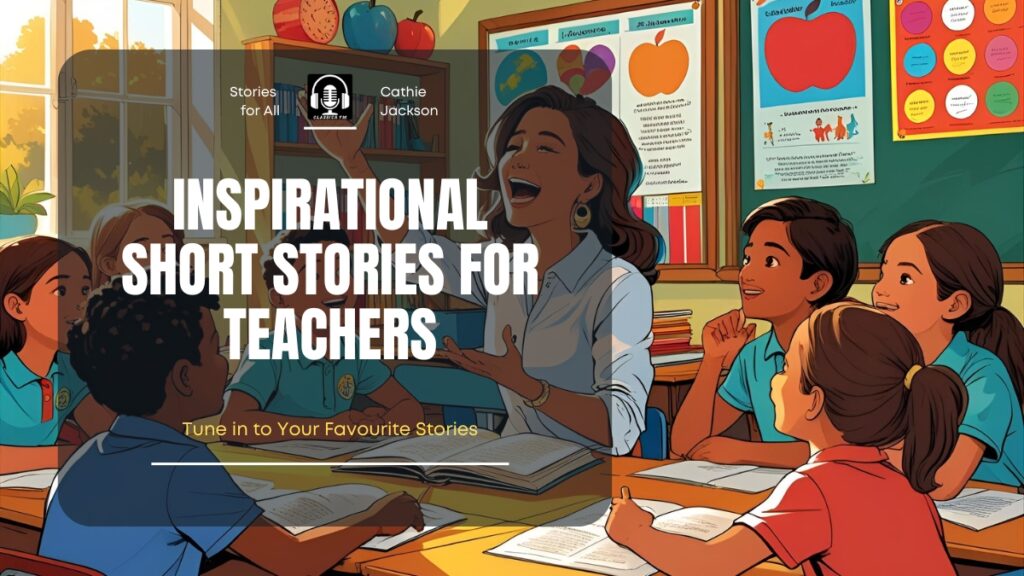Pumpkin Stories for 2nd Graders provide a focused, seasonal theme that supports learning across subjects. Teachers use Pumpkin Stories for 2nd Graders to teach vocabulary, narrative structure, measurement, and life cycles. This guide gives clear, classroom-ready ideas for books, lessons, assessments, and family engagement.
How this guide helps you teach pumpkin stories for 2nd graders?
This article explains how to choose age-appropriate texts and how to plan standards-aligned lessons. It includes read-aloud strategies, step-by-step activities, and assessment ideas. Use the examples to build a two-week unit. The guidance is classroom-tested and practical for second-grade teachers.
Pumpkin Stories for 2nd Graders
Pumpkin Stories for 2nd Graders bring fall to life in the classroom, combining fun, hands-on learning, and exciting stories that teach reading, science, and math in a single theme.
1. The Runaway Pumpkin
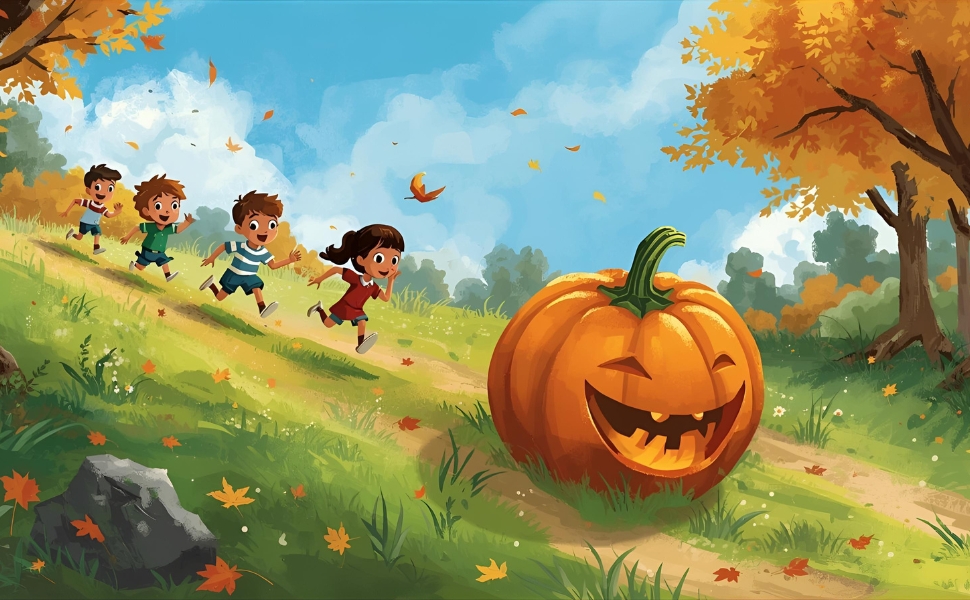
It was a crisp autumn morning.
The leaves were orange, gold, and red.
The air smelled of wood smoke and fallen leaves.
In the middle of the Baxter farm pumpkin patch sat a bright orange pumpkin.
It was enormous, round, and perfectly plump.
The Baxters had been growing it for months.
Everyone was excited to carve it for Halloween.
Little Tommy Baxter ran through the rows of pumpkins.
His boots crunched on the dry leaves.
“Look at this one!” he shouted.
“It’s the biggest pumpkin in the patch!”
He jumped up and down.
The pumpkin seemed almost as big as he was.
Tommy reached out to touch it.
The pumpkin wobbled.
Then it rolled.
And before anyone could react, it started to move down the gentle slope of the hill.
“Whoa! Stop!” yelled Tommy.
But the pumpkin kept rolling.
It picked up speed as it tumbled across the field.
The leaves rustled.
Other pumpkins watched in silence.
The giant pumpkin rolled past the barn.
It passed the chicken coop.
It rolled over the little wooden bridge at the edge of the field.
Mr. Baxter ran behind it.
“Stop that pumpkin! It’s mine!” he shouted.
The pumpkin ignored him.
It continued on its adventure.
Down the hill, the pumpkin rolled into the village.
People stopped in their tracks.
Children laughed and pointed.
“Look at that pumpkin go!” they shouted.
Mrs. Baxter ran with a basket in her hands.
“Tommy, catch it!” she called.
The pumpkin was too fast.
It bounced past the bakery.
It knocked over crates of apples.
“Oh no!” cried the baker.
The pumpkin rolled past the schoolyard.
It nearly hit the swings.
It rolled into the park.
Dogs barked and ran after it.
The pumpkin tumbled over a small hill.
It narrowly missed the fountain.
Tommy and his parents chased after it.
They slipped on leaves.
Villagers joined in.
It became a long, chaotic pumpkin parade.
Finally, the pumpkin stopped in the town square.
It looked calm and content.
People approached cautiously.
Some laughed.
Some shook their heads.
Some clapped.
Tommy stepped forward.
“You’re safe now,” he said.
The pumpkin wobbled slightly.
Everyone laughed again.
That night, the Baxters had an idea.
They turned the runaway pumpkin into a community feast.
It was huge.
There were enough seeds, pies, and decorations for the whole town.
Children helped scoop out seeds.
Adults carved the pumpkin into jack-o’-lanterns.
Glowing faces lit up the square.
Families sat on blankets.
They shared stories and pie.
Tommy smiled.
A little chaos had led to something wonderful.
The pumpkin patch became famous.
People from other towns came to see the pumpkin.
Every autumn, a pumpkin parade was held in its honor.
The pumpkin was more than a vegetable.
It became a symbol of joy and community.
Tommy and the villagers learned a lesson.
Sometimes letting go leads to the best surprises.
From then on, the runaway pumpkin rested in the town square each year.
It reminded everyone that adventure can come in the most unexpected places—even in a rolling pumpkin.
2. The Ugly Pumpkin
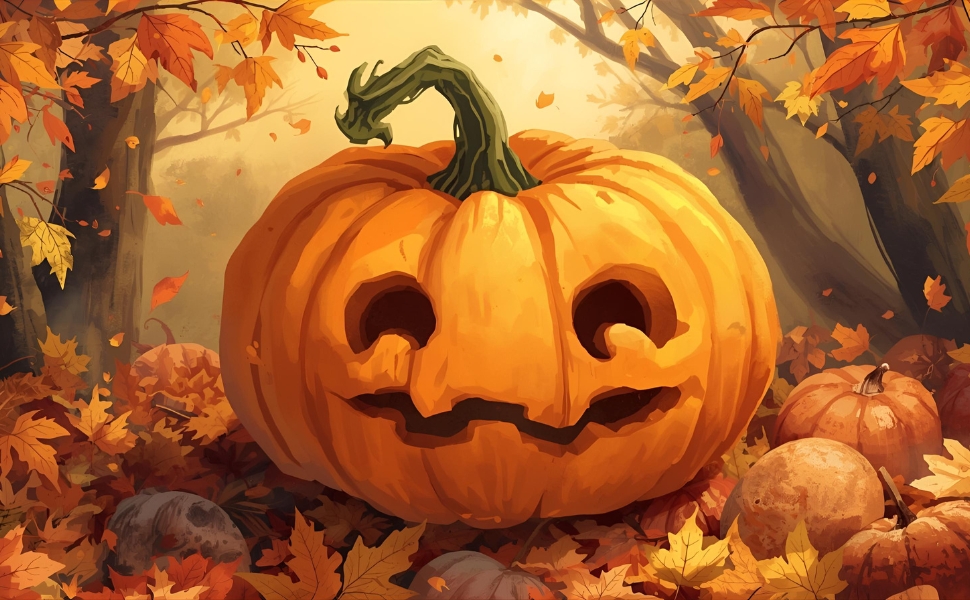
It was a crisp, cool autumn morning.
The leaves crunched under the feet of children running to the pumpkin patch.
Oranges, yellows, and reds dotted the landscape.
In the middle of the patch sat a pumpkin.
But it was not like the others.
It was small, lopsided, and misshapen.
Its color was dull compared to the bright, shiny pumpkins nearby.
The other pumpkins stared at it.
“You don’t belong here,” they whispered.
“You’re too ugly,” said a tall orange pumpkin.
The little pumpkin hung its head.
It felt sad and lonely.
“I will never be chosen for Halloween,” it thought.
“I will never be carved into a jack-o’-lantern.”
The wind rustled the leaves.
The pumpkin shivered.
It looked around the patch.
All the other pumpkins were perfect.
Some were round.
Some were tall.
Some were smooth and shiny.
Everyone seemed so happy.
But the little pumpkin felt out of place.
“I am ugly,” it said to itself.
“I am not special. I will be left behind.”
Days passed.
Children visited the patch.
They picked pumpkins for their homes.
They picked big pumpkins.
They picked orange pumpkins.
They picked smooth pumpkins.
But no one chose the little pumpkin.
It stayed in the patch alone.
One day, a girl came with her family.
She had bright eyes and a warm smile.
She looked at the pumpkin patch.
She picked the round ones first.
Then she saw the small, lopsided pumpkin.
Her eyes lit up.
“This one!” she shouted.
She held the pumpkin carefully.
The little pumpkin felt something it had never felt before.
Happiness.
The girl carried it home.
She washed it gently.
She drew a face on it.
Then she carved it carefully.
The pumpkin glowed with candlelight.
It smiled.
It had never looked so beautiful.
The little pumpkin realized something.
It was not ugly.
It had only needed someone to see its value.
The other pumpkins were perfect in their own ways.
But perfection was not everything.
The little pumpkin had character.
It had charm.
It had heart.
That Halloween night, children came to see the pumpkin.
They admired its unique shape.
They laughed at its funny face.
They thought it was the best pumpkin in the neighborhood.
The pumpkin felt proud.
It had a special place in the world.
It had a purpose.
It had been chosen.
The wind blew gently.
The stars twinkled above.
The little pumpkin glowed in the night.
It realized that being different was a gift.
It realized that everyone has value.
The girl placed it on the porch.
Neighbors passed by and smiled.
They whispered, “What a wonderful pumpkin!”
The little pumpkin felt warm inside.
It had never been happier.
The patch had taught it a lesson.
Sometimes, what seems ugly is actually extraordinary.
Being unique can bring joy.
Being different can be celebrated.
The next morning, the pumpkin was still glowing.
Children ran past, pointing and laughing.
“I want to carve one like that next year!” they said.
The little pumpkin had become an inspiration.
It had turned fear and loneliness into happiness.
It had taught the children a lesson too.
A lesson about seeing beauty where others might not.
From that day on, the little pumpkin never felt ugly again.
It had found its place.
It had found someone who loved it for what it was.
And that made all the difference.
Every Halloween, the little pumpkin remembered the feeling.
The glow, the laughter, the warmth of being chosen.
It knew that being different was something to be proud of.
And so, the little pumpkin lived happily, shining brightly every fall.
Its story was told again and again.
Children learned to look for the unique pumpkins in their own lives.
They learned that sometimes the things others overlook are the most special.
The little pumpkin had a happy ending.
And it reminded everyone that beauty comes in many shapes, sizes, and colors.
The pumpkin patch, once full of judgment, now felt a little kinder.
The other pumpkins learned too.
They learned to value character over appearance.
They learned to celebrate differences.
And the little pumpkin?
It was no longer just a small, lopsided pumpkin.
It was a hero in its own story.
It had taught the world that being different can be wonderful.
It had proven that even the “ugliest” pumpkin can shine brightly.
And so, every autumn, the little pumpkin glowed, reminding everyone that everyone has value.
3. Pumpkin Soup
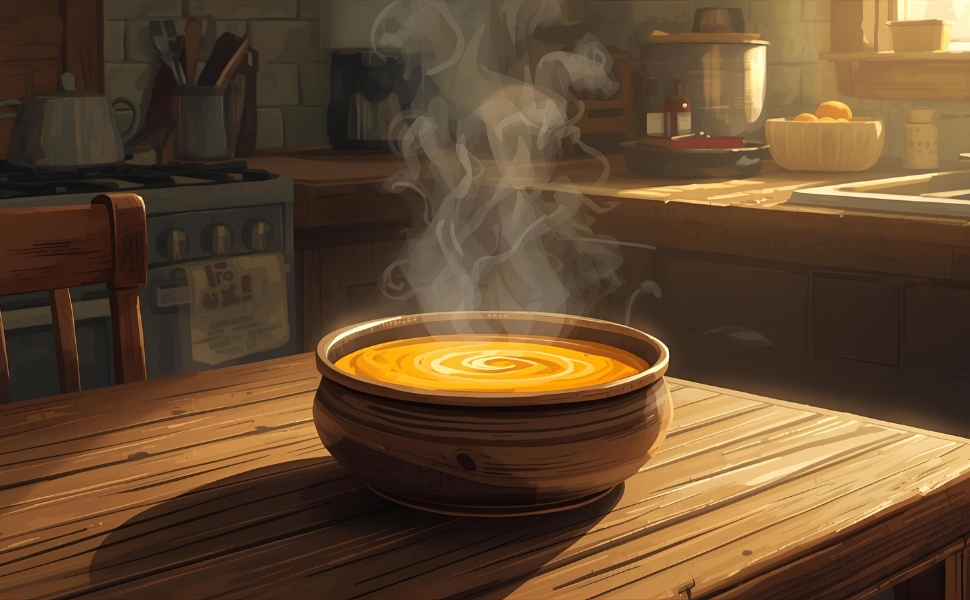
It was a crisp autumn morning by the pond.
Duck, Squirrel, and Cat were up early.
They had a plan.
Today, they would make pumpkin soup.
The pumpkins were ready.
They were big, orange, and perfect for cooking.
Duck waddled to the pumpkin patch.
“I will get the biggest pumpkin,” said Duck proudly.
Squirrel climbed up and down the vines.
“I will help. I am quick and clever,” said Squirrel.
Cat stretched lazily.
“I will taste it at the end,” said Cat.
The three friends had worked together before.
Making pumpkin soup was a favorite tradition.
But today, something felt different.
Duck picked the biggest pumpkin.
It was heavy.
Squirrel helped roll it back to the kitchen.
Cat followed, twitching its whiskers.
“Perfect pumpkin,” said Duck.
“It will make the best soup,” added Squirrel.
They cleaned the pumpkin together.
Duck chopped it carefully.
Squirrel stirred the pot.
Cat watched, licking its paws.
The aroma filled the kitchen.
It was warm and spicy.
“Almost ready,” said Duck.
Squirrel added herbs.
Cat purred in anticipation.
Finally, the soup was done.
They each took a taste.
“It’s delicious,” said Duck.
“Perfect,” said Squirrel.
Cat nodded, savoring the flavors.
The friends were happy.
But soon, Duck had an idea.
“I should guard the soup,” said Duck.
“Just to be safe,” added Duck.
Squirrel frowned.
“Why would we need to guard it? We are friends,” said Squirrel.
Duck ignored him.
He floated to the other side of the kitchen.
Cat watched silently.
The next day, Duck became stricter.
He wanted to stir the soup alone.
Squirrel felt upset.
“Why can’t we share?” Squirrel asked.
Duck quacked loudly.
“I made the soup! I should stir it!”
Cat tilted its head.
“Maybe we should all take turns,” suggested Cat.
But Duck didn’t listen.
He floated in the pot, moving the spoon himself.
Squirrel and Cat felt sad.
The pumpkin soup didn’t taste as fun anymore.
They missed sharing the work.
One windy afternoon, the pumpkin soup boiled over.
Duck tried to control it alone.
But it spilled everywhere.
“Oh no!” shouted Duck.
Squirrel jumped in to help.
Cat pushed a broom with its paws.
Together, they cleaned the mess.
Duck realized something.
“It’s much easier when we work together,” said Duck.
Squirrel smiled.
“I told you,” said Squirrel.
Cat purred, pleased to see friendship restored.
The next day, they made a new pumpkin soup.
This time, everyone had a role.
Duck chopped the pumpkin.
Squirrel stirred the pot.
Cat added a pinch of seasoning.
The aroma was even better than before.
They laughed and shared stories while cooking.
Finally, the soup was ready.
They each took a big taste.
“It’s delicious,” said Duck.
“Perfect teamwork,” said Squirrel.
Cat licked its bowl clean.
The friends smiled.
The kitchen was warm.
The soup was hot.
The laughter was louder.
That evening, the friends shared the pumpkin soup with neighbors.
The villagers came and enjoyed the treat.
Everyone praised the teamwork.
Duck, Squirrel, and Cat felt proud.
They realized that pumpkin soup was not just about taste.
It was about friendship, sharing, and working together.
From that day on, they made pumpkin soup together every season.
They took turns chopping, stirring, and tasting.
No one tried to do everything alone again.
The friends grew closer.
They learned a lesson about cooperation.
They learned that food tastes better when shared.
And they learned that every friend has a role.
The pumpkin patch became a happy place.
Neighbors came to watch the friends cook.
Children learned how to make pumpkin soup.
The story of Duck, Squirrel, and Cat spread across the village.
It reminded everyone to share, help, and care for one another.
Every autumn, the pumpkin soup smelled sweet in the kitchen.
It was warm, spicy, and full of laughter.
Duck, Squirrel, and Cat always remembered that the best pumpkin soup comes from teamwork.
The friends’ bond grew stronger every year.
They played together after cooking.
They watched the leaves fall.
They drank warm tea and nibbled on pumpkin bread.
The pond reflected the orange sky.
The pumpkins glowed in the evening light.
And the friends knew that the true magic of pumpkin soup was friendship.
So, every season, children and adults alike learned the story.
It was a story about pumpkins, warmth, and working together.
And Duck, Squirrel, and Cat became the heroes of the pumpkin patch.
The pumpkin soup always reminded everyone that friendship is the best ingredient of all.
4. The Perfect Pumpkin Pie
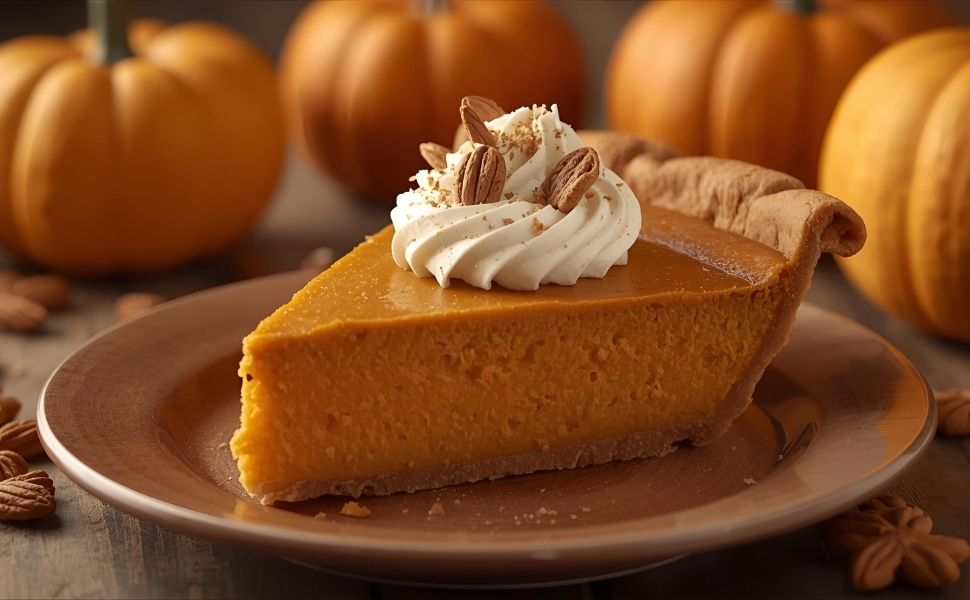
It was a quiet autumn morning.
The sun peeked through the golden leaves.
Mrs. McGregor, a kind widow, was busy in her kitchen.
She loved baking.
Her favorite treat was pumpkin pie.
Today, she planned to make the perfect pumpkin pie for her husband.
She picked the brightest, roundest pumpkin from the garden.
It was heavy but perfect.
She rolled it into the kitchen carefully.
The pumpkin glowed in the morning light.
Mrs. McGregor washed it thoroughly.
She sliced it open, revealing bright orange flesh.
The smell filled the kitchen.
She added sugar, cinnamon, and nutmeg.
Her hands worked quickly.
She mixed the ingredients with care.
“This will be the best pie ever,” she said softly.
The dough was rolled carefully.
She pressed it into the pie pan.
The pumpkin filling went in.
She smoothed it until it was perfect.
The oven door closed with a soft click.
The pie baked slowly.
The warm scent filled the entire house.
Her husband returned home from the fields.
He smelled the pie immediately.
“Ah, pumpkin pie!” he said.
He sat down eagerly.
But as he took a bite, something strange happened.
A sudden sound came from the kitchen.
The pumpkin pie seemed to wiggle.
Then, to their surprise, a small puff of magical smoke appeared.
The pie glowed faintly.
Mrs. McGregor blinked.
Her husband looked amazed.
“Did the pie just… move?” he asked.
The magic was gentle.
The pie seemed alive, but in a happy, playful way.
The next day, Mrs. McGregor decided to bake another pie.
She followed the same careful steps.
This time, she noticed the pie seemed to have a personality.
It wiggled and jiggled happily in the oven.
Her husband laughed.
“It’s the perfect pumpkin pie,” he said.
And it truly was.
People in the village heard about the magical pie.
They came to see the famous treat.
Mrs. McGregor shared pieces with everyone.
Children giggled at the tiny movements of the pie.
Adults marveled at the flavor.
It was smooth, sweet, and spicy.
The pumpkin pie brought joy to the entire village.
Mrs. McGregor realized that her careful work and love made it magical.
It wasn’t just the ingredients.
It was her kindness and care.
The pie reminded everyone that magic comes from love and attention.
Every autumn, she baked another pumpkin pie.
Each one was slightly different.
Sometimes it wiggled more.
Sometimes it glowed brighter.
But every pie was perfect.
One Halloween, Mrs. McGregor baked a huge pumpkin pie for the town festival.
It was so large that it needed a special cart to move it.
Children helped carry it through the streets.
The whole village gathered to taste it.
Everyone agreed it was the most delicious pumpkin pie they had ever eaten.
The pie brought people together.
Neighbors shared stories.
Friends laughed.
Families celebrated.
Mrs. McGregor watched with a happy heart.
She knew that the pumpkin pie was more than a dessert.
It was a symbol of community and love.
Her husband smiled proudly.
He took a bite and declared, “This is truly perfect!”
The magic of the pie continued for years.
Each autumn, children waited for the pie-making day.
They watched Mrs. McGregor carefully prepare the pumpkins.
They helped with rolling dough and stirring the filling.
Everyone learned that baking is an act of love.
And that love can make even ordinary things magical.
The pumpkin pie had a story of its own.
It taught lessons about patience, care, and kindness.
No one ever called it “just a pie.”
It was the perfect pumpkin pie.
It glowed, wiggled, and brought happiness wherever it went.
Mrs. McGregor shared her secrets with children.
She taught them how to choose the best pumpkin.
She showed them how to measure ingredients carefully.
She explained how magic comes from attention to detail.
Every child learned that making something with care can create joy.
The village festival became famous for pumpkin pies.
People traveled from far and wide to taste Mrs. McGregor’s magical treats.
Some said the pies had special powers.
Others said it was the love baked into every slice.
Children always laughed the loudest.
They loved watching the pies wiggle slightly on the trays.
Adults appreciated the warmth the pies brought.
Even the animals seemed drawn to the aroma.
Dogs wagged their tails.
Cats purred happily.
And the pumpkin pies glowed softly under the autumn sun.
Mrs. McGregor continued baking for many years.
She never grew tired of the pumpkin pies.
Each year, she tried something new.
A little more cinnamon here.
A pinch of nutmeg there.
The pies were always a little different.
But they were always perfect.
She taught the children that perfection is not about being the same every time.
It is about putting your heart into your work.
And love makes every pie magical.
On Halloween night, the pies were displayed proudly.
Villagers carried their slices home.
Children clutched their pieces tightly.
Families shared them around the table.
Stories were told.
Laughter filled the air.
The perfect pumpkin pie became a tradition.
It was a symbol of joy, magic, and community.
Even after many years, people remembered Mrs. McGregor’s pies.
They told the story to their own children.
And every time someone baked a pumpkin pie with care, a little bit of magic returned.
The perfect pumpkin pie was not just food.
It was love in a crust.
It was happiness in a dish.
It was the heart of the village, shared with everyone.
And every year, when autumn leaves fell, the villagers remembered the widow and her magical pies.
They remembered how something as simple as a pumpkin could bring so much joy.
They remembered that perfection comes from care, patience, and love.
And so, the story of the perfect pumpkin pie was told again and again.
A magical tale for every autumn.
A tale about pumpkins, pies, and hearts full of love.
And the magic, they say, is still there, waiting in every kitchen where someone bakes with care.
5. I Like Pumpkins
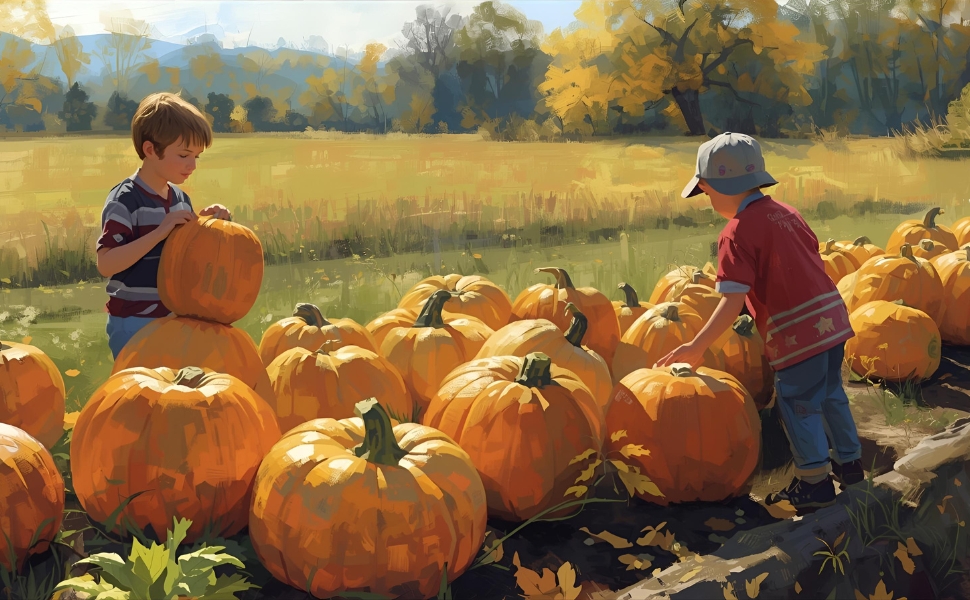
It was a crisp autumn morning.
The leaves had turned gold, orange, and red.
A young girl named Lily skipped through the pumpkin patch.
She loved pumpkins.
She loved their round shapes.
She loved their bright colors.
She loved everything about them.
“Look at this one!” she said.
“It’s so big!”
Lily picked it up carefully.
It was heavy, but she held it proudly.
Her little brother, Ben, ran behind her.
“I like pumpkins too!” he shouted.
They wandered through the rows of pumpkins.
Some were tall.
Some were short.
Some were smooth.
Some were bumpy.
But Lily liked them all.
She ran to a small orange pumpkin.
“This one is perfect for a pie,” she said.
Ben picked a tiny pumpkin.
“It will be my jack-o’-lantern,” he said.
The children laughed.
They carried their pumpkins to the edge of the patch.
Lily’s mom followed with a basket.
“Let’s pick a few more for our friends,” she said.
Lily agreed eagerly.
She chose a round one.
She chose a lopsided one.
She chose one that was tiny and cute.
Ben added another small one.
They filled the basket with pumpkins of every shape and size.
Back at home, Lily placed the pumpkins on the porch.
She admired them.
“They are beautiful,” she said.
Her cat, Whiskers, sniffed the pumpkins.
He purred and rubbed against them.
The smell of fresh pumpkins filled the air.
Lily loved baking with pumpkins.
She made pumpkin pies.
She made pumpkin muffins.
She even made pumpkin bread.
Her family loved every treat.
But pumpkins were not just for food.
Lily enjoyed decorating them too.
She painted funny faces.
She carved silly jack-o’-lanterns.
She even made pumpkin lanterns for the windows.
The pumpkin patch became her favorite place.
She loved exploring each row.
She loved discovering new pumpkins.
Sometimes she found tiny ones hiding behind leaves.
Sometimes she found enormous ones rolling slowly in the sun.
Every pumpkin was special.
Every pumpkin had a story.
Lily imagined adventures for each one.
One pumpkin could be a ship.
Another could be a castle.
Another could be a car.
Her imagination made pumpkins magical.
She shared this magic with Ben.
They built pumpkin houses.
They built pumpkin forts.
They rolled pumpkins down the hill for fun.
The pumpkins became part of their playtime.
They laughed and ran among the leaves.
The pumpkin patch was full of joy.
One day, Lily had an idea.
“Let’s give pumpkins to our neighbors,” she said.
Ben agreed.
They carried a basket full of pumpkins down the lane.
They knocked on doors.
They smiled and handed out pumpkins.
Neighbors were happy.
They thanked Lily and Ben.
“Your pumpkins are beautiful,” said Mrs. Thompson.
“Thank you,” Lily said.
The children felt proud.
Pumpkins were more than food.
They were gifts.
They were fun.
They were joy.
Back at home, Lily and Ben decorated the porch.
They stacked pumpkins of different sizes.
They painted faces.
They placed little lights inside.
When the sun set, the pumpkins glowed.
The porch looked magical.
Whiskers watched, his eyes wide.
The children laughed.
They had created a pumpkin wonderland.
Every evening, they admired their work.
Pumpkins became a part of their daily life.
They read books about pumpkins.
They learned how pumpkins grew.
They learned about seeds and vines.
They planted pumpkin seeds in the spring.
They watered them carefully.
They watched them grow.
By autumn, the pumpkins were ready.
The cycle continued every year.
Pumpkins brought happiness.
Pumpkins brought learning.
Pumpkins brought creativity.
Lily realized pumpkins were not just for Halloween.
They were for every day.
They were for baking.
They were for decorating.
They were for sharing.
They were for playing.
They were for imagination.
They were for joy.
Every pumpkin had a lesson.
Some taught patience while growing.
Some taught creativity when decorating.
Some taught sharing when given to neighbors.
Some taught teamwork when baked with friends.
Lily’s love for pumpkins grew each year.
She wrote stories about pumpkins.
She drew pictures of pumpkins.
She told friends about pumpkin adventures.
Pumpkins became part of her life.
Her family joined in the fun.
Even her friends got involved.
They all decorated pumpkins together.
They baked together.
They shared together.
Pumpkins brought everyone closer.
Each autumn, the pumpkin patch was busy.
Children ran among the rows.
Parents picked pumpkins.
Neighbors exchanged smiles.
Pumpkins created community.
And Lily was always at the center.
She had learned so much.
Pumpkins taught her about nature.
Pumpkins taught her about creativity.
Pumpkins taught her about generosity.
And they taught her about joy.
Every pumpkin was unique.
Every pumpkin had value.
Every pumpkin could inspire.
And Lily liked them all.
She liked the small ones.
She liked the large ones.
She liked the round ones.
She liked the lopsided ones.
She liked the plain ones.
She liked the bright orange ones.
She liked the deep orange ones.
She liked them all.
And in the pumpkin patch, she felt at home.
She felt happy.
She felt creative.
She felt joyful.
Pumpkins were more than vegetables.
They were friends.
They were inspiration.
They were magic.
And Lily, with her basket full of pumpkins, smiled.
Because pumpkins made everything better.
Every autumn, she remembered the joy they brought.
She shared it with family, friends, and neighbors.
She celebrated pumpkins in every way she could.
And that was why she said proudly,
“I like pumpkins.”
6. Big Pumpkin
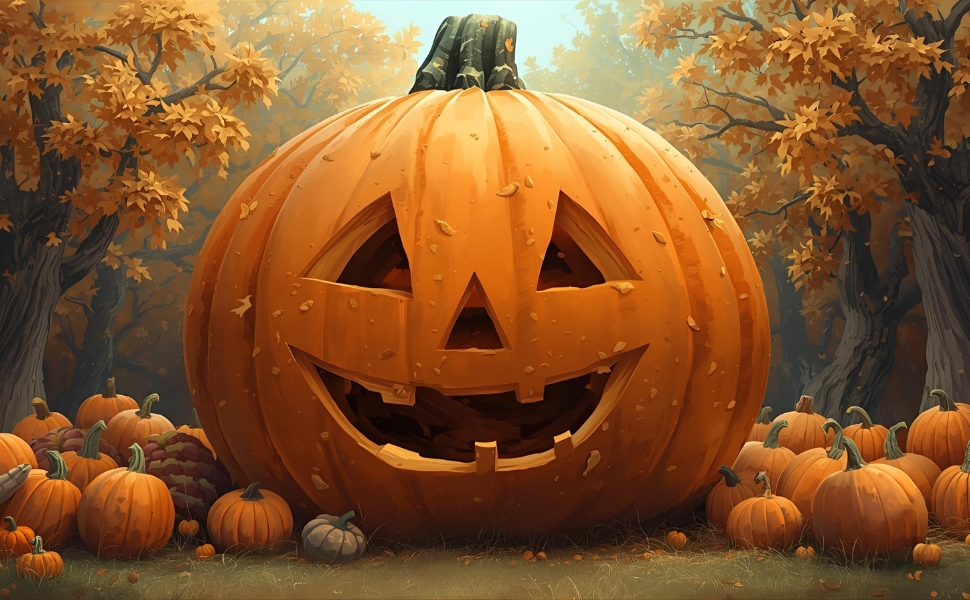
It was a chilly Halloween night.
The moon hung high and bright.
The wind rustled through the trees.
On the edge of the pumpkin patch sat the biggest pumpkin anyone had ever seen.
It was enormous, round, and orange.
Everyone in the patch admired it.
But there was one problem.
The pumpkin was stuck.
It would not budge.
Vampire came first.
He put his arms around the pumpkin.
He pushed with all his strength.
But the pumpkin did not move.
Vampire huffed and puffed.
He tried again.
Still, the pumpkin stayed stuck.
“Hmm,” said Vampire.
“I cannot move it alone.”
Witch walked by next.
“Hello, Vampire. What are you doing?” she asked.
“The pumpkin is too big to move,” said Vampire.
Witch looked at the pumpkin.
“It’s very large,” she agreed.
She tried to lift it.
She pushed with all her might.
But the pumpkin stayed put.
“Oh dear,” said Witch.
“I cannot move it alone either.”
Mummy shuffled over slowly.
“Maybe I can help,” he said.
He tried to push.
He tried to pull.
The pumpkin did not budge.
They all looked at each other.
“This pumpkin is too big for one of us,” said Vampire.
“Maybe we need to work together,” said Witch.
“Yes,” said Mummy.
“We need a plan.”
The three friends huddled together.
They thought about how to move the pumpkin.
Vampire suggested pushing from one side.
Witch suggested pulling from the other side.
Mummy suggested lifting from underneath.
They tried each plan.
Nothing worked.
The pumpkin stayed stuck.
They were tired.
They were frustrated.
The moon shone down brightly.
Then Bat flew in.
“I heard about your pumpkin problem,” said Bat.
Bat looked at the pumpkin.
“I might have an idea,” said Bat.
“What is it?” asked Vampire.
“I can help,” said Bat.
“Maybe we need more people.”
The friends agreed.
They asked everyone in the pumpkin patch for help.
Ghost, Zombie, and Skeleton came.
They all worked together.
Vampire pushed.
Witch pulled.
Mummy lifted.
Bat flew above, cheering them on.
Ghost floated next to the pumpkin.
Skeleton grabbed the vine.
Zombie pushed from behind.
Slowly, the pumpkin wobbled.
Then it began to move.
It rolled forward.
It rolled toward the edge of the patch.
Everyone laughed.
They cheered.
The pumpkin was free!
But now another problem appeared.
The pumpkin was rolling too fast!
It tumbled down the hill.
Vampire and Witch ran after it.
Mummy and the others followed.
Bat flew above, guiding them.
The pumpkin rolled past trees and rocks.
It rolled past the scarecrow.
Everyone shouted, “Stop!”
The pumpkin bounced and spun.
Finally, it landed gently at the edge of the pond.
Everyone breathed a sigh of relief.
The pumpkin was safe.
The friends gathered around it.
“It was too big for one of us,” said Vampire.
“But together, we did it,” said Witch.
Mummy nodded.
“Teamwork wins every time,” he said.
They decided to carve the pumpkin for Halloween.
Each friend had a job.
Vampire cut the top.
Witch scooped out the seeds.
Mummy carved the face.
Ghost added finishing touches.
Skeleton decorated with spooky patterns.
Zombie added a funny smile.
Bat sprinkled glitter on top.
The pumpkin glowed in the moonlight.
It was magnificent.
Everyone admired their work.
The big pumpkin had become a symbol of teamwork.
It was more than a pumpkin.
It was a reminder that working together could solve big problems.
The friends invited all the children in the village.
They shared pumpkin seeds and pumpkin treats.
Children laughed and played near the pumpkin.
They took turns taking pictures with it.
Everyone celebrated Halloween together.
The big pumpkin was the center of joy.
It glowed warmly under the stars.
Everyone cheered and clapped.
Vampire, Witch, and Mummy smiled.
Bat flew in circles above them.
Ghost, Skeleton, and Zombie joined the fun.
The pumpkin patch was full of laughter.
The moon shone brightly over the hill.
The night was magical.
The friends realized something important.
Big problems are easier when shared.
Teamwork makes the impossible possible.
Even the largest pumpkin can be moved with cooperation.
They also learned to be patient.
They learned to communicate.
They learned to help each other.
The big pumpkin became famous.
Every Halloween, people from nearby villages came to see it.
Children remembered the story.
They told their friends how teamwork had freed the pumpkin.
It became a tradition.
Each year, the friends recreated the story.
They carved new pumpkins together.
They shared seeds, treats, and laughter.
The pumpkin patch was never lonely again.
Even the small pumpkins felt important.
Every pumpkin had a role.
Every pumpkin had a purpose.
Vampire, Witch, Mummy, Bat, Ghost, Skeleton, and Zombie worked together every year.
They laughed and played.
They carved pumpkins carefully.
They told the story of the big pumpkin to new friends.
It was always a happy night.
The pumpkin glowed brightly in the moonlight.
It reminded everyone of the power of friendship.
It reminded everyone that working together could achieve great things.
It reminded everyone that even a giant pumpkin could be moved with cooperation.
And so, the big pumpkin sat proudly in the patch.
It became a symbol of teamwork, friendship, and Halloween fun.
Every year, children looked forward to helping.
Every year, laughter filled the pumpkin patch.
Every year, the big pumpkin glowed under the moon.
And everyone remembered the lesson:
Together, we can do anything.
No pumpkin is too big.
No challenge is too hard.
When friends work together, magic happens.
And the big pumpkin smiled.
7. Me and the Pumpkin Queen
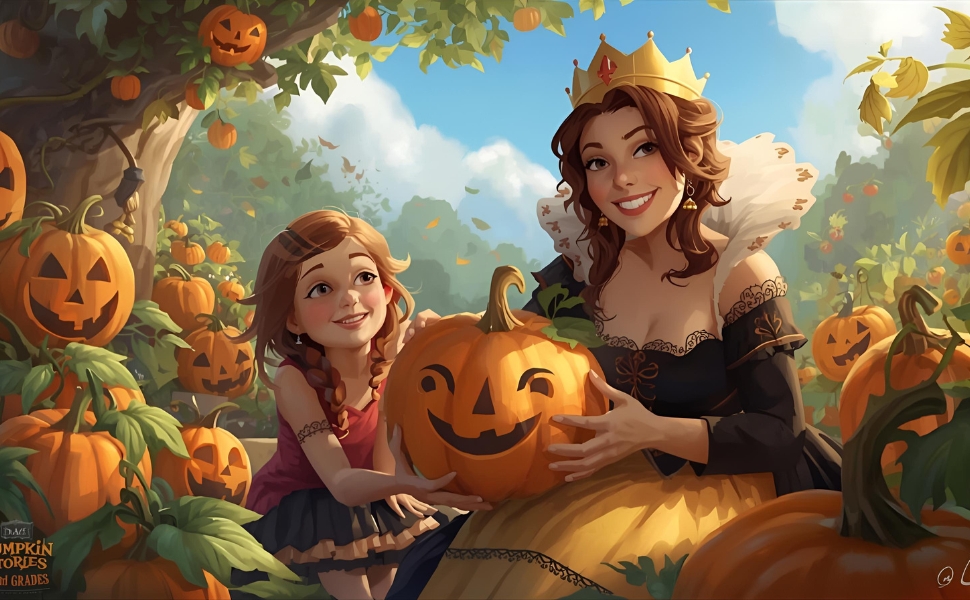
It was the heart of autumn.
The leaves had turned bright red, orange, and gold.
The town was preparing for the annual pumpkin festival.
Everyone was excited.
But no one was as excited as young Sammy.
Sammy loved pumpkins.
He loved carving them.
He loved decorating them.
And this year, he had a special goal.
He wanted to meet the Pumpkin Queen.
The Pumpkin Queen was a legend in the town.
She wore a sparkling crown.
She carried a wand shaped like a pumpkin.
She greeted children with smiles and laughter.
And she had the most magnificent pumpkin ever grown in the festival.
Sammy dreamed of seeing her pumpkin in person.
He imagined the glow of her pumpkin at night.
He imagined the magical scent of pumpkin pies all around.
On the morning of the festival, Sammy woke up early.
He ran to the pumpkin patch with his backpack.
Inside, he had a small pumpkin of his own.
It was round and bright orange.
He had grown it carefully all season.
He wanted the Pumpkin Queen to see it.
The festival was full of activity.
Stalls lined the streets.
Children laughed and ran about.
Vendors sold pumpkin pies, pumpkin bread, and pumpkin muffins.
Musicians played cheerful tunes.
Sammy’s eyes widened with excitement.
He finally saw her.
The Pumpkin Queen stood on a small stage.
Her crown sparkled in the sunlight.
Her gown shimmered like the leaves in autumn.
And there, beside her, was the biggest pumpkin Sammy had ever seen.
It was enormous.
It was perfect.
It glowed with a magical light.
Sammy’s heart raced.
He wanted to show her his pumpkin.
He carefully placed his pumpkin on the display table.
He hoped she would notice.
The Pumpkin Queen walked among the children.
She smiled at everyone.
She stopped by Sammy’s pumpkin.
She bent down to look closely.
“It’s lovely,” she said softly.
Sammy’s face lit up.
“Thank you!” he said.
She touched the pumpkin gently.
“You’ve taken good care of it,” she said.
Sammy nodded proudly.
“I watered it every day,” he said.
“I protected it from the birds,” he added.
The Pumpkin Queen smiled.
“Your care shows,” she said.
She turned to the crowd.
“Every pumpkin here is special,” she announced.
“And every grower has worked hard.”
Sammy felt proud.
But the excitement wasn’t over yet.
The festival included pumpkin games.
There was a pumpkin rolling contest.
A pumpkin seed spitting contest.
A pumpkin decorating contest.
Sammy joined eagerly.
He rolled his pumpkin carefully.
It wobbled and spun.
It rolled straight to the finish line.
“Winner!” shouted the crowd.
Sammy jumped for joy.
Next, he decorated his pumpkin.
He carved a happy face.
He added leaves around it.
He placed a tiny hat on top.
The Pumpkin Queen came by to see.
“It’s wonderful,” she said.
“Creative and cheerful!”
Sammy’s heart swelled.
He had not only shown his pumpkin, but also shared his creativity.
The day continued with more fun.
Sammy learned new pumpkin facts.
He learned about pumpkin seeds.
He learned about pumpkin vines.
He learned how to make the best pumpkin pies.
And he listened carefully to the Pumpkin Queen’s stories.
She told about the first pumpkin festival.
She told about magical pumpkins from long ago.
She told about how pumpkins bring people together.
Sammy realized something important.
The festival was not just about pumpkins.
It was about community.
It was about sharing.
It was about joy.
At the end of the day, the Pumpkin Queen announced the Pumpkin Parade.
Children carried their pumpkins through the streets.
Sammy proudly held his small pumpkin.
It glowed under the evening lights.
The crowd cheered.
Music played.
Laughter filled the air.
The Pumpkin Queen rode in her carriage.
She waved to everyone.
She stopped by Sammy.
“You have a kind heart,” she said.
“You take care of your pumpkin, and you bring joy to others.”
Sammy beamed.
It was the best moment of his life.
The parade ended at the town square.
Everyone gathered to admire the pumpkins.
The largest pumpkin, the Pumpkin Queen’s, sat in the center.
But all the other pumpkins, including Sammy’s, were celebrated.
The Pumpkin Queen gave each child a small medal.
“Thank you for sharing your pumpkins,” she said.
“Thank you for making this festival magical.”
Sammy clutched his medal tightly.
He had achieved his dream.
He had met the Pumpkin Queen.
He had shared his pumpkin.
And he had learned the true magic of pumpkins.
That night, Sammy returned home.
He placed his pumpkin on the porch.
It glowed softly in the moonlight.
He thought about the day.
The festival, the games, the parade, the Pumpkin Queen.
He realized that the pumpkin itself was special.
But the happiness it brought was even more important.
It brought friends together.
It brought families together.
It brought joy to everyone.
Sammy carefully carved a small face into his pumpkin.
He added a smile.
A smile for everyone who had made the festival so wonderful.
He placed a tiny candle inside.
It glowed warmly.
And Sammy knew he would never forget this day.
Every autumn, he would remember the Pumpkin Queen.
Every autumn, he would grow his pumpkin with care.
Every autumn, he would share it with friends and neighbors.
And every autumn, he would remember that pumpkins are not just vegetables.
They are joy.
They are creativity.
They are love.
The Pumpkin Queen had shown him that.
And Sammy would carry that lesson forever.
The pumpkin patch would always be magical.
Every pumpkin, big or small, had value.
Every grower, young or old, had a story.
And every festival would bring people together to celebrate the magic of pumpkins.
Sammy smiled at his glowing pumpkin.
He whispered softly, “Thank you, Pumpkin Queen.”
The pumpkin flickered in the gentle autumn breeze.
It was the perfect ending to a perfect day.
And Sammy knew that next year, he would grow an even bigger pumpkin.
He would share it.
He would celebrate it.
And he would remember the joy of the Pumpkin Queen.
The festival, the pumpkins, the laughter, and the magic would never be forgotten.
And Sammy, with his small glowing pumpkin, felt happy, proud, and ready for the next autumn adventure.
Why Pumpkin Stories for 2nd Graders work in the classroom?
Pumpkin stories give students concrete experiences. They can see, touch, and measure pumpkins. These real objects make abstract skills more accessible.
Key instructional benefits
- Vocabulary growth: Concrete nouns such as vine, seed, and rind are easy to illustrate.
- Comprehension: Narratives often have clear cause-and-effect chains.
- Cross-curricular links: Science, math, writing, and art connect naturally.
- Engagement: Seasonal themes sustain interest and provide authentic tasks.
Teachers report improved participation when lessons combine a read-aloud with a hands-on lab. Pumpkin Stories for 2nd Graders give repeated contexts for vocabulary and concept practice.
Planning a unit: objectives and standards
Begin with measurable objectives. Align lessons to local standards for reading, science, and math.
Sample objectives for a two-week Pumpkin Stories for 2nd Graders unit:
- Reading: Retell a story with three details and cite text evidence.
- Writing: Produce an informational paragraph describing the pumpkin life cycle.
- Science: Record seed germination and describe stages of plant growth.
- Math: Estimate and measure pumpkin circumference and compare class data.
Write a short rubric for each target. Use the rubric to guide instruction and assessment.
Two-week pacing guide: day by day
Use this practical schedule to run a Pumpkin Stories for 2nd Graders unit.
Week 1: Narrative & Vocabulary
- Day 1: Read Spookley the Square Pumpkin. Pre-teach 4 vocabulary words.
- Day 2: Guided groups: sequence events and map character traits.
- Day 3: Drama: role play a key scene; discuss choices.
- Day 4: Writing: alternate ending with peer conference.
- Day 5: Assessment: oral retell using sequencing cards.
Week 2: Nonfiction & Cross-Curricular Work
- Day 6: Read The Pumpkin Book. Label diagram and note facts.
- Day 7: Plant seeds in clear cups; begin observation logs.
- Day 8: Math lab: measure pumpkin circumference using string and rulers.
- Day 9: Cooking connection: follow a recipe and practice fractions.
- Day 10: Culminating event: classroom pumpkin fair or family sharing night.
Use the schedule flexibly to match school calendars and resource availability.
Read-aloud strategy that supports comprehension
A focused read-aloud builds skills when using Pumpkin Stories for 2nd Graders. Follow this five-step routine.
- Activate prior knowledge. Ask students what they already know about pumpkins.
- Pre-teach vocabulary. Show images and gestures for 3–5 tier-two words.
- Set a purpose. Tell students the target skill, such as “listen for problem and solution.”
- Read with intentional pauses. Stop for predictions and partner talk.
- Wrap up with a quick assessment. Use an exit ticket or a one-sentence retell.
This routine is brief, repeatable, and fits into typical class blocks.
Seed-counting and estimation (45 minutes)
Objective: Students will estimate and count pumpkin seeds, then compare estimates with actual counts.
Materials: 1–2 pumpkins, bowls, tens frames, cups, data sheets, pencils.
- Hook (5 min): Show a whole pumpkin. Ask students to estimate seeds. Record estimates on chart paper.
- Read (10 min): Read How Many Seeds in a Pumpkin? Pause for predictions.
- Activity (20 min): Small groups scoop seeds, clean them, and count by tens. Record totals on the class chart.
- Discuss (5 min): Compare estimates and actual counts. Ask students why estimates differed.
- Exit (5 min): One-sentence reflection: “I learned ___.”
This lesson connects literacy and math. It makes counting purposeful.
Science lab: life-cycle study with observation protocols
A multi-week life-cycle study supports scientific thinking.
Steps for Pumpkin Stories for 2nd Graders life-cycle lab
- Plant seeds in clear cups with labeled dates.
- Place cups on a sunny windowsill.
- Students draw weekly observations and measure sprout height.
- Record basic data: date, height, number of leaves.
- Discuss pollination and the role of insects.
Use student journals to track progress. Turn journals into a class booklet at the end.
Math lab: measuring and analyzing pumpkin data
Measurement lessons help students use tools and record findings.
Activities
- Measure circumference using string, then measure the string with a ruler.
- Estimate circumference and height, then record actual measurements.
- Build a class bar graph of pumpkin sizes and calculate the class average.
- Discuss variation: Why do some pumpkins grow larger than others?
Include short reflection prompts: “What surprised you about our data?”
Writing tasks tied to Pumpkin Stories for 2nd Graders
Use chosen books as mentor texts for writing instruction.
Writing options
- Informational paragraph: “How a pumpkin grows,” with labeled diagram.
- Opinion piece: “Which pumpkin book taught the best lesson?” Use text evidence.
- Procedural writing: “How to roast pumpkin seeds,” with numbered steps.
- Narrative: Tell a short story from the pumpkin’s point of view.
Provide sentence frames and a simple checklist for editing.
Art, drama, and performance
Art and drama deepen comprehension and offer assessment alternatives.
Ideas
- Create comic strips to retell key events.
- Use Stumpkin as a wordless text for student narration and captions.
- Build a class mural showing the pumpkin life cycle.
- Perform a short play adapted from a pumpkin story.
These activities allow students to show understanding through multiple modalities.
Differentiation and supports
Plan scaffolds to reach all learners during Pumpkin Stories for 2nd Graders lessons.
- Struggling readers: Use small-group reading and picture cues.
- English learners: Provide bilingual vocabulary cards and gestures.
- Advanced students: Invite them to design a simple experiment about growth variables.
- Sensory needs: Offer quiet stations and tactile materials.
Assign roles within groups to ensure equitable participation.
Assessment: formative checks and summative tasks
Use varied assessments to measure learning.
Formative checks
- Quick retell using picture cards.
- Exit tickets with one new fact.
- Observation checklists for collaboration and participation.
Summative tasks
- Informational paragraph graded with a rubric.
- Small-group presentation showing seed-count data and conclusions.
Document progress across the two-week unit.
Classroom management and station rotations
Stations organize hands-on Pumpkin Stories for 2nd Graders work efficiently.
Suggested rotation (20–25 minutes each):
- Teacher-led read-aloud and guided retell.
- Seed-count and math lab.
- Planting and science journals.
- Art and writing station.
Rotate roles (timekeeper, materials manager, recorder). Rotate groups daily to vary exposure.
Family and community engagement
Involve families to extend learning beyond school.
- Send home a simple planting kit with instructions.
- Host a pumpkin fair or family night to share student projects.
- Partner with a local farm for a field trip or a guest speaker.
Family involvement provides authentic audiences for student work.
Remote and hybrid adaptations
Adapt the unit for remote learning while keeping it hands-on.
- Send or allow pick-up of seed kits and simple materials.
- Record read-alouds with captions and short interactive tasks.
- Ask families to upload weekly photos of seed growth for class sharing.
Maintain clear instructions for home activities and provide alternatives for families with limited materials.
Safety and food handling
Follow protocols when working with food.
- Collect allergy information before seed tasting or cooking.
- Use adult supervision for roasting seeds or cutting pumpkins.
- Sanitize surfaces and require hand-washing before and after handling pumpkins.
- Use pre-roasted seeds if adult supervision is limited.
Clear procedures maintain a safe classroom environment.
Case study: two-class pilot with measurable gains
A small pilot implemented a two-week Pumpkin Stories for 2nd Graders unit in two second-grade classes. The unit combined read-alouds, labs, and a family event.
Key findings
- Vocabulary improvement: average gain of 18% on a short vocabulary quiz.
- Writing growth: 30% of students advanced one rubric level in informational writing.
- Student engagement: teachers reported higher participation and task focus.
Practical takeaways
- Pre-teaching vocabulary increases retention.
- Hands-on labs make abstract concepts concrete.
- Family events extend learning and increase effort.
Document outcomes with simple measures such as pre/post vocabulary checks and rubric-scored writing samples.
Frequently Asked Questions (FAQs)
Which Pumpkin Stories for 2nd Graders teach measurement best?
Books with visual details and accompanying real pumpkins work best for measurement labs.
How long should a read-aloud last in this grade?
Aim for 15–20 minutes for complex texts, with short interactive pauses.
Can these units align with standards?
Yes. Map each objective to local reading, science, and math standards at the planning stage.
What are low-cost materials for a pumpkin unit?
Use classroom pumpkins, string, rulers, clear cups, paper, pencils, and seed bags.
Ready-to-use printables and teacher notes
Prepare a simple printable pack to save prep time:
- Sequencing cards and retell prompts.
- Seed-count chart and measurement templates.
- Parent letter and permission form.
- Assessment rubrics and station signs.
A small packet reduces planning time for teachers and substitutes.
Conclusion
Pumpkin Stories for 2nd Graders create a strong, practical theme for fall instruction. These stories support reading comprehension, vocabulary development, life-cycle science, and measurement skills.
Use structured read-alouds, hands-on labs, and varied assessments to guide learning. Begin with one anchor text and expand into labs, writing, and family events. Try a Pumpkin Stories for 2nd Graders unit this season and use the printable templates to save time.

